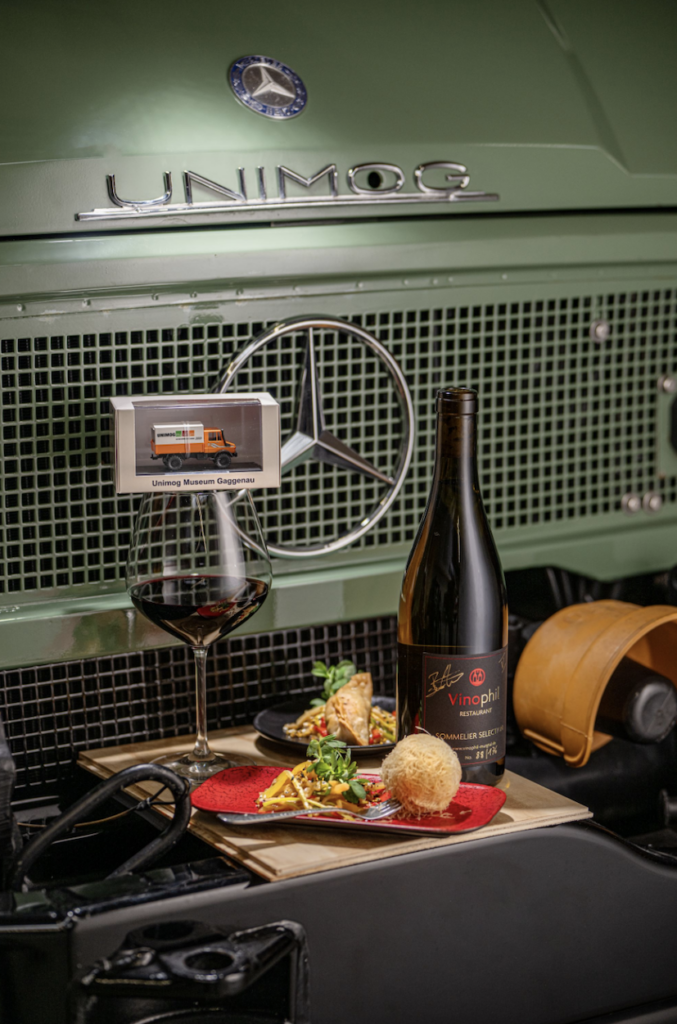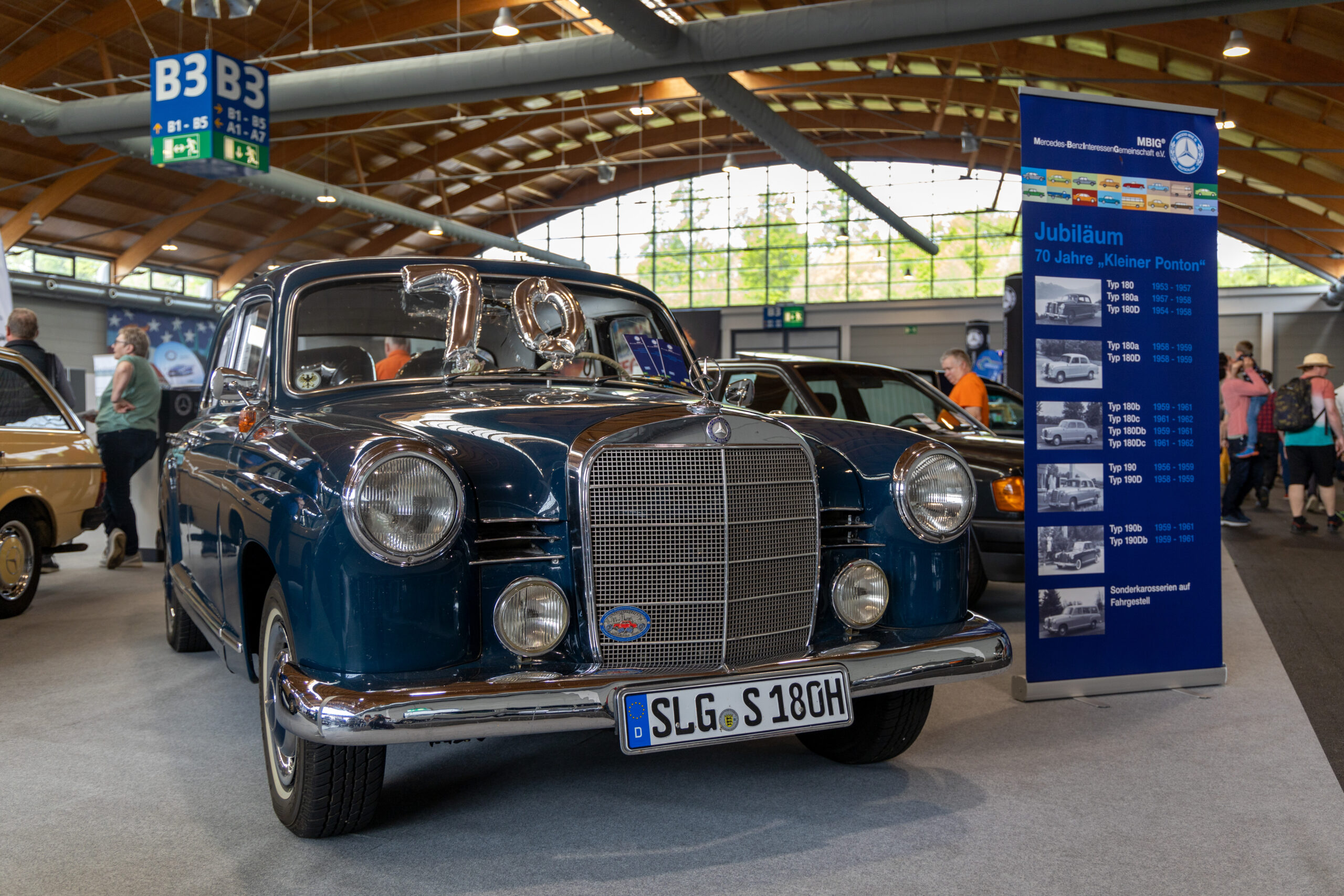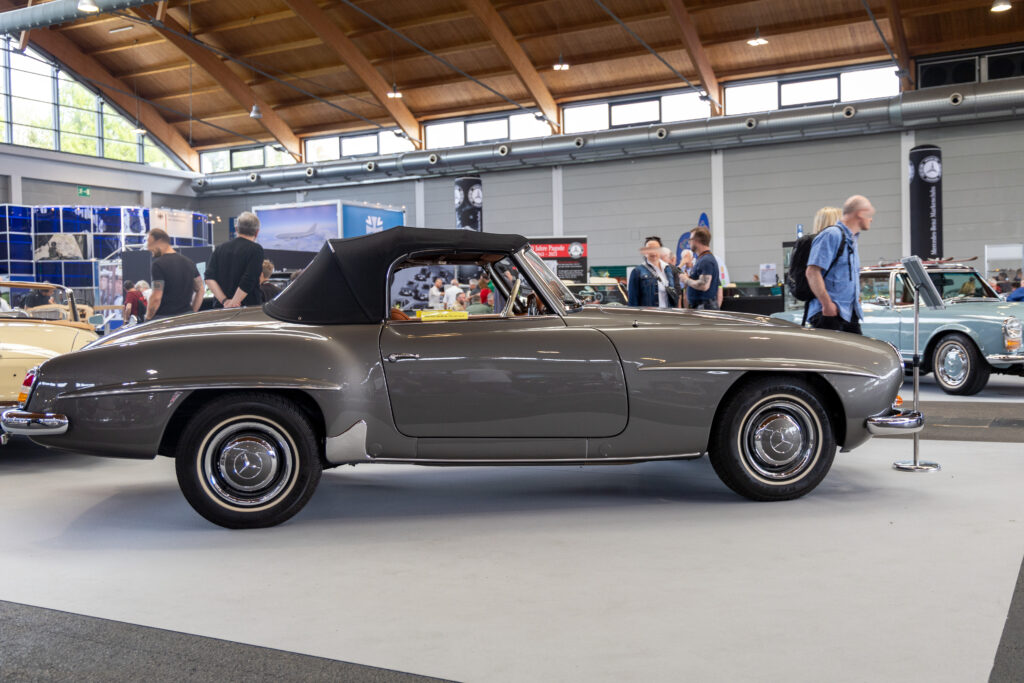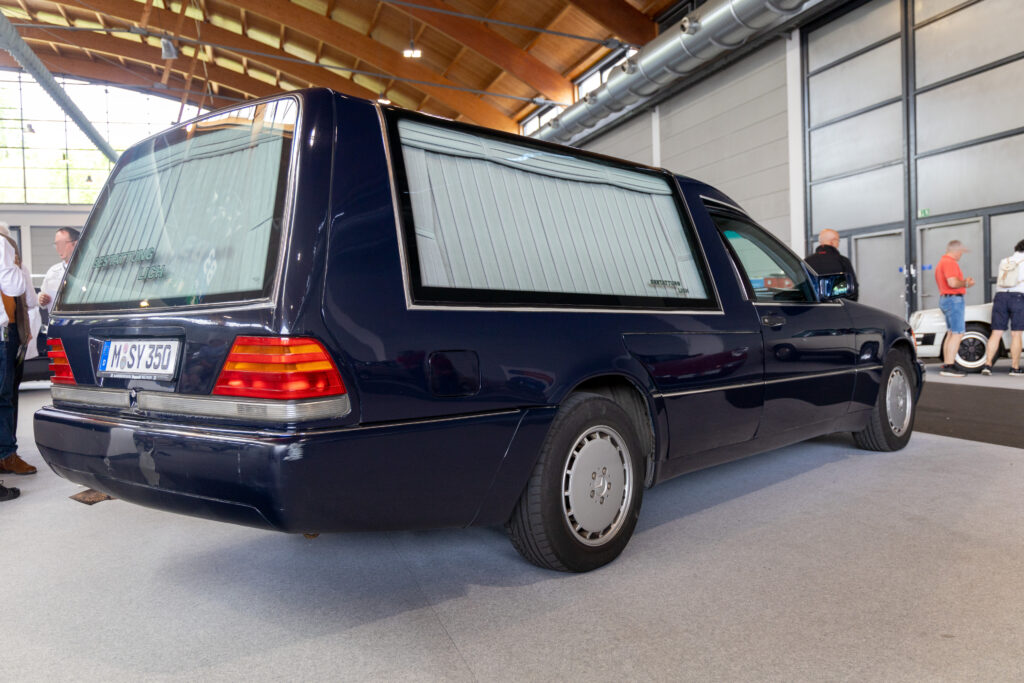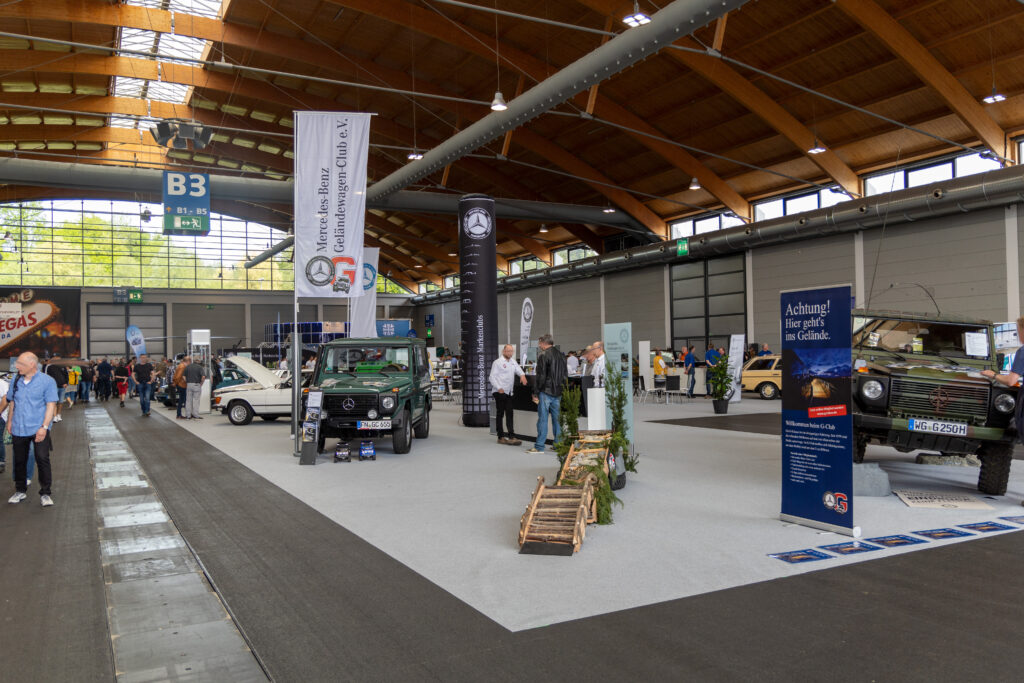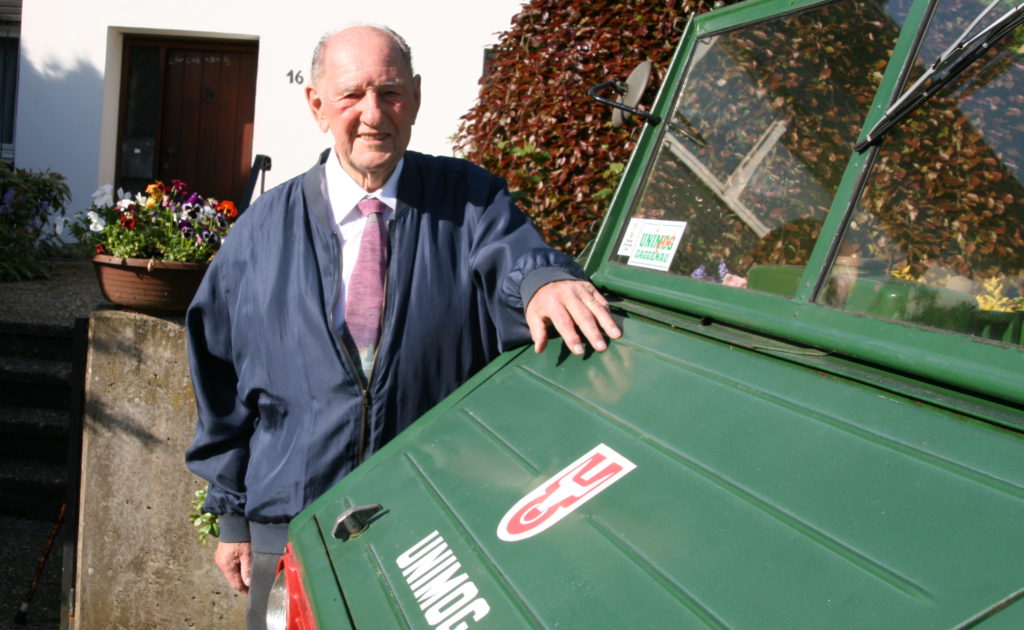
Manfred Florus anläßlich seines 90. Geburtstag 2014. – Manfred Florus on the occasion of his 90th birthday in 2014. Foto: Michael Wessel
See English text below
Unimog-Pionier Manfred Florus wäre 100 Jahre alt geworden
Ein glücklicher Zufall wollte es, dass Manfred Florus 1949 nach einem enttäuschend verlaufenen Bewerbungsgespräch bei der Württembergischen Warenzentrale in Göppingen an der früheren Werkzeugmaschinenfabrik der Gebrüder Boehringer vorbeikam und auf einem Schild las: „Arbeitskräfte für den UNIMOG gesucht!“ – Dazu erinnerte er sich später weiter: „Ich betrachtete das Schild und überlegte: Boehringer war damals in Göppingen durchaus ein Begriff und mit seinen etwa 900 Mitarbeitern eine recht große Firma – was sprach also dagegen, zumindest einmal in den Hof zu treten? – Dort empfingen mich die Herren Dietrich und Sturm, und ich lernte auch bald deren Sekretärin, Frau Fetzner, kennen. – Jetzt ging alles ganz schnell. Ich wurde als Hilfsarbeiter für die Montage eingestellt, und wie es damals so üblich war, begann ich gleich am nächsten Tag mit der Arbeit.“ Somit der Beginn einer Bilderbuchkarriere.
Doch noch ein kleiner Blick weiter zurück:
Manfred Florus wurde am 4. Mai 1924 geboren. Nach einer landwirtschaftlichen Lehre bei Graf von Rechberg in der Nähe von Göppingen studierte er ab 1947 Landtechnik an der Landwirtschaftlichen Hochschule in Hohenheim. Dort sah der junge Student 1948 zum ersten Mal einen Unimog. Auch daran erinnerte er sich in Band 1 der „Geschichten rund um den Unimog“: „Von Liebe auf den ersten Blick konnte keine Rede sein.
Hätte mir damals jemand prophezeit, dass ich einmal mein ganzes Berufsleben diesem Fahrzeug widmen würde, hätte ich sicher laut gelacht.“ Das lag wohl auch daran, dass sich der Pflug bei der geplanten Vorführung verformte, weil er den Kräften des Unimog nicht standhalten konnte.“
Sein Kollege Roland Feix, der bereits den Unimog Nr. 23 mit montiert hatte, empfahl ihm, auch in die Erprobung zu wechseln. Und schon bei den ersten Feldversuchen gelang es Florus, mehreren Bauern einen Unimog zu verkaufen. Sein Talent wurde erkannt und er bekam den Auftrag, in Norddeutschland Vorführungen durchzuführen und Händler für den Unimog zu gewinnen. Ein Riesenerfolg!
„Vorführen, vorführen und nochmals vorführen“ war auch weiterhin die Aufgabe von Manfred Florus, als er 1951 mit dem Unimog und vielen Kollegen von Göppingen nach Gaggenau umzog. Es gelang ihm wieder, viele Großaufträge, vor allem im Ausland, an Land zu ziehen. 1959 wurde er daher Leiter der Verkaufsförderung und 1966 schließlich Leiter des Unimog-Exports. In dieser Aufgabe pflegte er sehr freundschaftliche Kontakte in alle Welt – auch über seine Pensionierung im Jahr 1989 hinaus. Als Berater machte er 1990 den neuen Leiter des Geschäftsbereichs Unimog, Hans-Jürgen Wischhof, darauf aufmerksam, dass das Belgische Militär über die Beschaffung von Radfahrzeugen diskutiere. Am Ende zäher Verhandlungen konnten 1750 Unimog geliefert werden
Besonders stolz war Florus auf eine Goldmedaille, die er anlässlich der Olympischen Spiele 1964 in Innsbruck erhielt, da in dem schneearmen Jahr viele Unimog und Mercedes-Lastwagen unter seiner Regie die Winterspiele mit ihren Schneetransporten retteten.
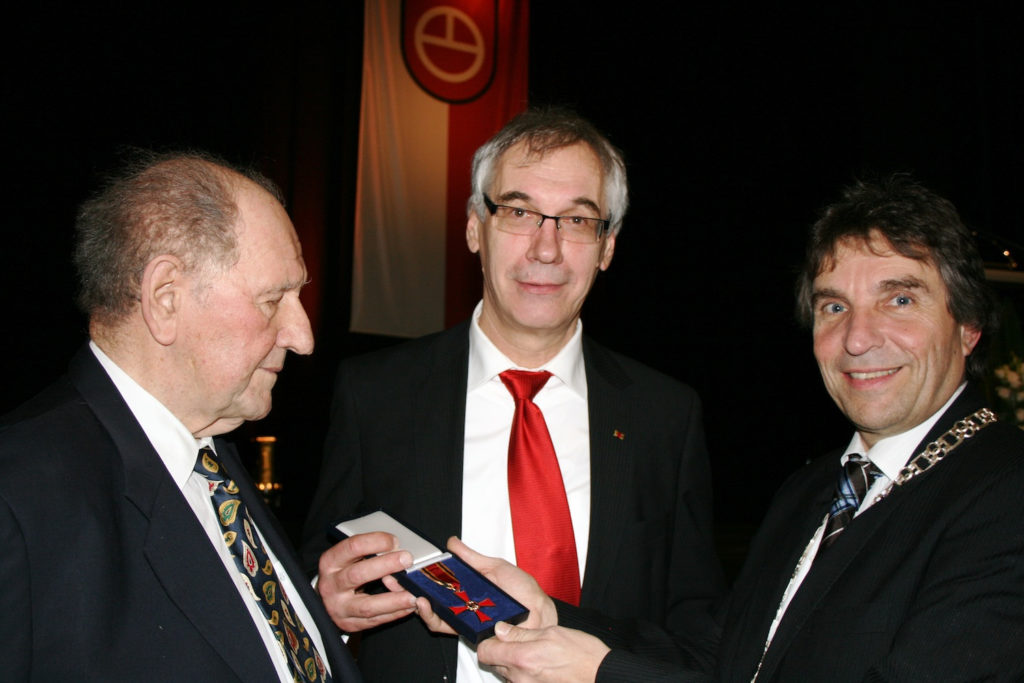
Manfred Florus und sein Sohn Christof Florus, damals Oberbürgermeister der Stadt Gaggenau, bei der Verleihung des Bundesverdienstkreuzes an Stefan Schwaab (Mitte), Vorsitzender des Vereins Unimog-Museum, im Jahr 2012 – Manfred Florus and his son Christof Florus, then Lord Mayor of Gaggenau, at the presentation of the Federal Cross of Merit to Stefan Schwaab, Chairman of the Unimog Museum Association, in 2012 – Foto: Michael Wessel
Seiner Universität Hohenheim fühlte er sich stets verbunden. So war er von 1988 bis 2003 der 1. Vorsitzende des Fördervereins deren Deutschen Landwirtschaftsmuseums (DLM) und anschließend bis 2012 Vorsitzender des Kuratoriums. Manfred Florus erhielt 2004 die Gedenkmedaille der Max-Eyth-Gesellschaft „in Würdigung seiner erfolgreichen Aktivitäten zur Förderung des weltweiten Images des Unimog und in Anerkennung seiner außerordentlichen Verdienste um den Erhalt und die Weiterentwicklung des Deutschen Landwirtschaftsmuseums in Stuttgart-Hohenheim“.
Von seinen Erfahrungen mit dem Unimog und in der Leitung des Fördervereins DLM konnte der Unimog-Club Gaggenau von der Gründung 1993 an profitieren, denn er übernahm bis 2008 die Aufgabe des Zweiten Vorsitzenden. Vieles, was für andre Vorstandskollegen Neuland war, hatte er in Hohenheim schon erlebt und so konnte er diese Erfahrungen einbringen.
Für die im Unimog-Club Gaggenau entstandene Idee, ein Unimog-Museum zu verwirklichen, übernahm es dann Florus mit seinen Vorstandskollegen Hans-Jürgen Schöpfer und Edwin Westermann in einer Arbeitsgruppe mögliche Standorte zu ermittelten und diese zu bewerteten. Als dann aber Stefan Schwaab stattdessen einen relativ großen Neubau favorisierte, konnte sich Florus mit dieser neuen Idee nicht so recht anfreunden. Aber sein Erfahrungsschatz floss in der Folgezeit dennoch in die Konzeption des Unimog-Museums und in die Ausgestaltung vieler Sonderausstellungen ein. Er konnte eben aus einem reichen Erfahrungsschatz schöpfen und blieb daher selten eine Antwort schuldig. Schade, dass er die beispielhaft positive Entwicklung des Museums bis hin zur Erweiterung in 2023 nicht mehr miterleben konnte.
Manfred Florus war auch ein „Stehaufmännchen“: 2009 galt er kurzzeitig als klinisch tot, nachdem er auf dem Waldfriedhof Gaggenau einen Herzstillstand erlitten hatte. Aber auch zahlreiche Operationen am Knie, an der Hüfte und sogar an der Aorta hat er immer wieder überstanden.
Manfred Florus starb am 15. April 2018 im Alter von 93 Jahren. Er wäre jetzt 100 Jahre alt geworden. Er bleibt unvergessen.
Michael Wessel
Ehrenvorsitzender des Unimog Club Gaggenau e. V.
weitere Fotos unten
Unimog pioneer Manfred Florus would have been 100 years old
It was a lucky coincidence that in 1949, after a disappointing job interview at the Württembergische Warenzentrale in Göppingen, Manfred Florus passed the former Boehringer brothers’ machine tool factory and read on a sign: ‘Labour wanted for the UNIMOG!’ – He later recalled: ‘I looked at the sign and thought: Boehringer was well known in Göppingen at the time and was quite a large company with around 900 employees – so what was wrong with at least stepping into the yard once? – Mr Dietrich and Mr Sturm welcomed me there, and I soon got to know their secretary, Mrs Fetzner. – Now everything happened very quickly. I was hired as a labourer for the assembly department and, as was customary at the time, I started work the very next day.’ The start of a picture-book career.
But let’s take a look further back:
Manfred Florus was born on 4 May 1924. After an agricultural apprenticeship with Graf von Rechberg near Göppingen, he studied agricultural engineering at the agricultural college in Hohenheim from 1947. It was there in 1948 that the young student saw a Unimog for the first time. He also recalled this in Volume 1 of ‘Stories about the Unimog’: ‘There was no question of love at first sight.
If someone had told me back then that I would dedicate my entire professional life to this vehicle, I would have laughed out loud.’ This was probably also due to the fact that the plough deformed during the planned demonstration because it could not withstand the forces of the Unimog.’
His colleague Roland Feix, who had already helped assemble Unimog No. 23, recommended that he also switch to testing. And during the first field trials, Florus succeeded in selling a Unimog to several farmers. His talent was recognised and he was commissioned to carry out demonstrations in northern Germany and win over dealers for the Unimog. A huge success!
‘Demonstrate, demonstrate and demonstrate again’ continued to be Manfred Florus’ task when he moved with the Unimog and many colleagues from Göppingen to Gaggenau in 1951. He again succeeded in landing many large orders, especially abroad. In 1959, he became Head of Sales Promotion and finally Head of Unimog Export in 1966. In this role, he maintained very friendly contacts all over the world – even after his retirement in 1989. As a consultant, he drew the attention of the new head of the Unimog division, Hans-Jürgen Wischhof, in 1990 to the fact that the Belgian military was discussing the procurement of wheeled vehicles. At the end of tough negotiations, 1750 Unimogs were delivered
Florus was particularly proud of a gold medal he received on the occasion of the 1964 Olympic Games in Innsbruck, as many Unimog and Mercedes lorries saved the Winter Games with their snow transports under his direction in that snow-poor year.
He always felt connected to the University of Hohenheim. From 1988 to 2003, he was the first Chairman of the Association for the Promotion of the German Agricultural Museum (DLM) and subsequently Chairman of the Board of Trustees until 2012. Manfred Florus received the Max Eyth Society’s commemorative medal in 2004 ‘in honour of his successful activities to promote the global image of the Unimog and in recognition of his extraordinary services to the preservation and further development of the German Agricultural Museum in Stuttgart-Hohenheim’.
The Unimog Club Gaggenau was able to benefit from his experience with the Unimog and in the management of the DLM support organisation right from its foundation, as he took on the role of Second Chairman until 2008. He had already experienced many things in Hohenheim that were uncharted territory for other board colleagues and was therefore able to contribute this experience.
When the Unimog Club Gaggenau came up with the idea of realising a Unimog museum, Florus and his fellow board members Hans-Jürgen Schöpfer and Edwin Westermann took on the task of identifying and evaluating possible locations in a working group. However, when Stefan Schwaab favoured a relatively large new building instead, Florus could not quite get to grips with this new idea. However, his wealth of experience subsequently flowed into the design of the Unimog Museum and the organisation of many special exhibitions. He was able to draw on a wealth of experience and therefore rarely failed to provide an answer. It is a pity that he was no longer able to witness the exemplary positive development of the museum up to its expansion in 2023.
Manfred Florus was also a ‘stand-up man’: in 2009, he was briefly considered clinically dead after suffering a cardiac arrest in the Gaggenau forest cemetery. However, he also repeatedly survived numerous operations on his knee, hip and even his aorta.
Manfred Florus died on 15 April 2018 at the age of 93. He would have been 100 years old now. He remains unforgotten.
Michael Wessel
Honorary Chairman of the Unimog Club Gaggenau e. V.
Zur Erinnerung noch einige Fotos / A few photos as a reminder
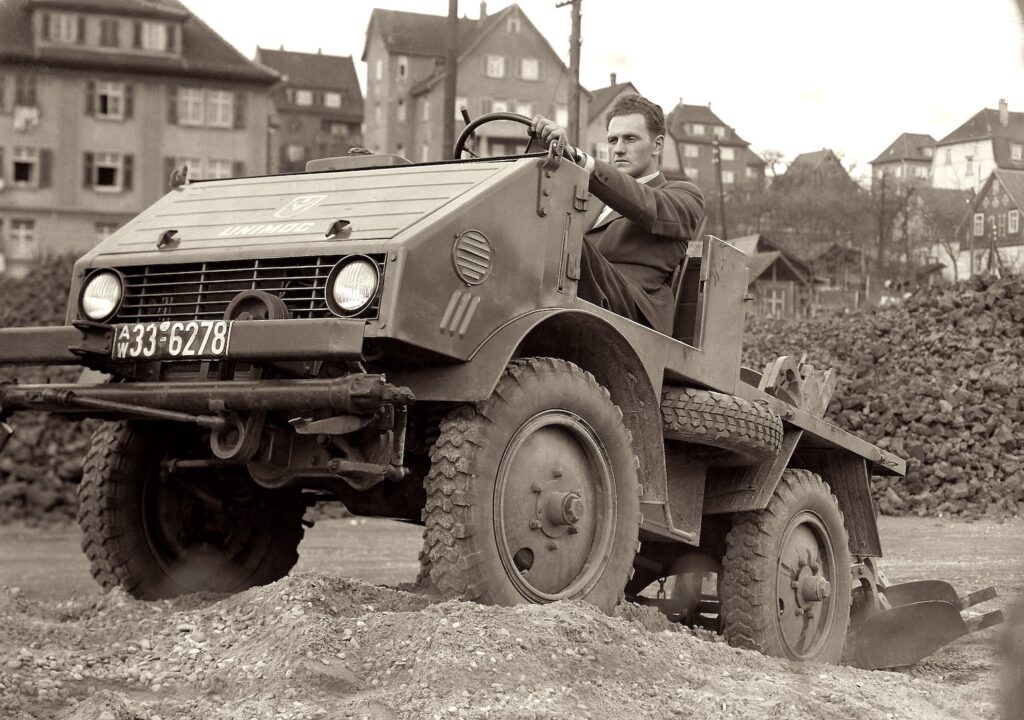
Manfred Florus 1950 im Fabrikhof von Gebrüder Boehringer in Göppingen mit einem Unimog 70200 mit Pflug. – Manfred Florus in 1950 in the factory yard of Gebrüder Boehringer in Göppingen with a Unimog 70200 with plough. Foto Daimler Truck
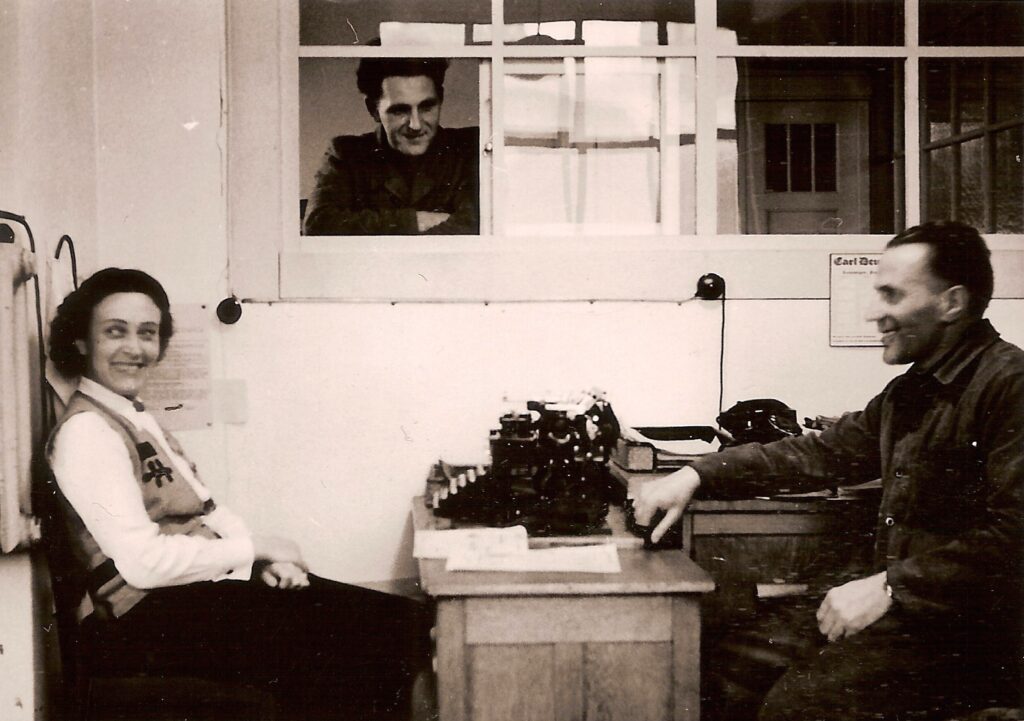
Manfred Florus schaut 1950 in das kleine Unimog-Büro bei Gebr. Boehringer in Göppingen mit der Sekretärin Margot Fetzner und dem Meister Hans Esenwein. – Manfred Florus looks into the small Unimog office at Gebr. Boehringer in Göppingen with secretary Margot Fetzner and foreman Hans Esenwein in 1950. Foto privat

Manfred Florus in einem Gaggenauer Unimog-Prospekt von 1951. – Manfred Florus in einem Gaggenauer Unimog-Prospekt von 1951
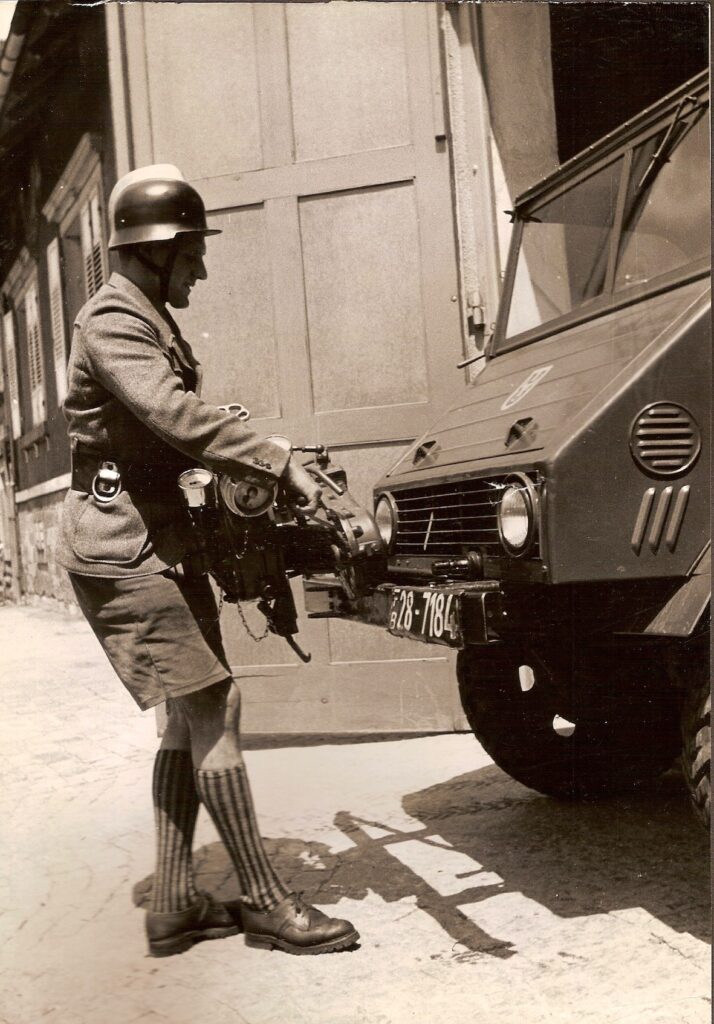
Manfred Florus um 1952 als “Feuerwehrmann” auf einem Werbefoto. – Manfred Florus around 1952 as a ‘fireman’ in an advertising photo
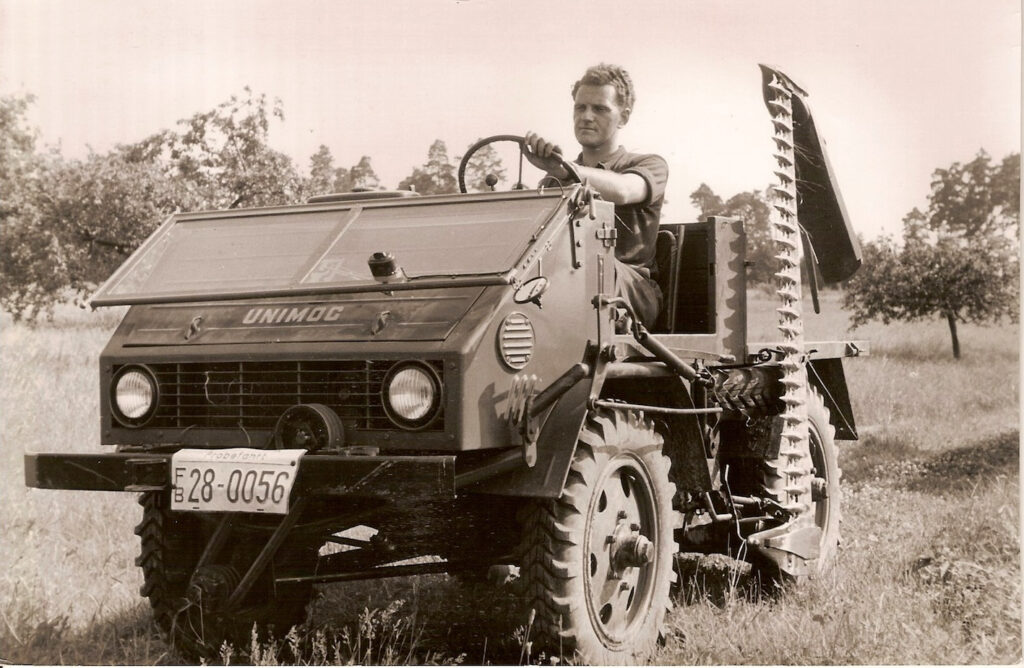
Manfred Florus als Vorführer mit Unimog 2010 und Mörtl-Mähwerker Anfang der 1950er Jahre – Manfred Florus as demonstrator with Unimog 2010 and Mörtl mower in the early 1950s. Foto Daimler Truck
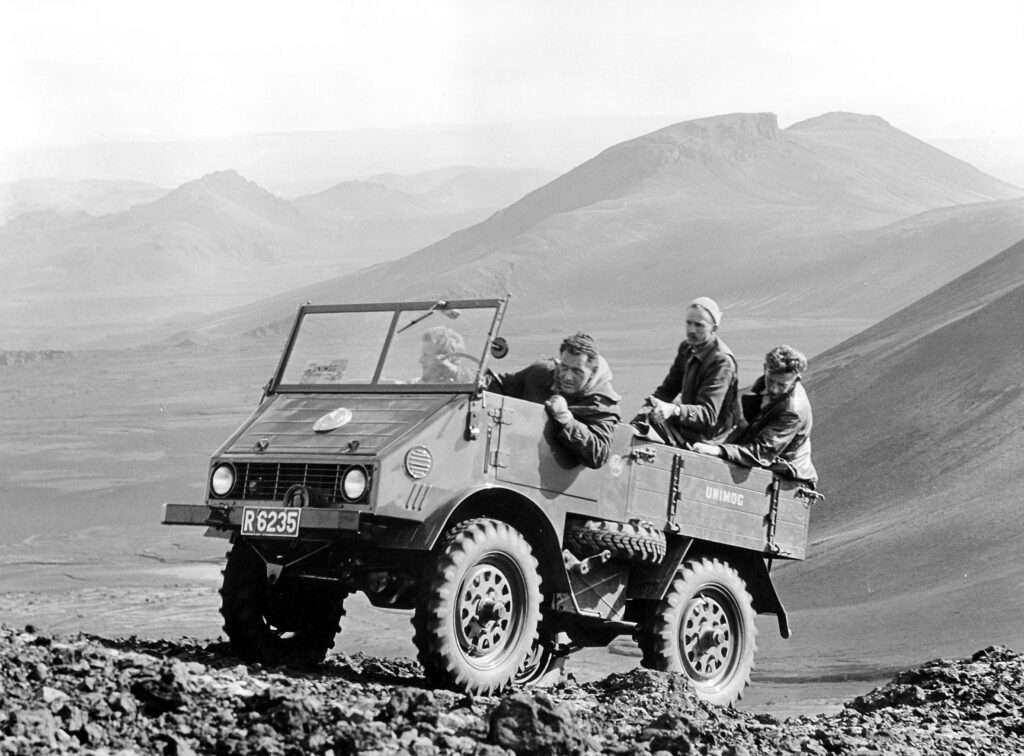
Manfred Florus bei einer Vorführung in Island 1956 – Manfred Florus at a demonstration in Iceland in 1956. Foto Daimler Truck
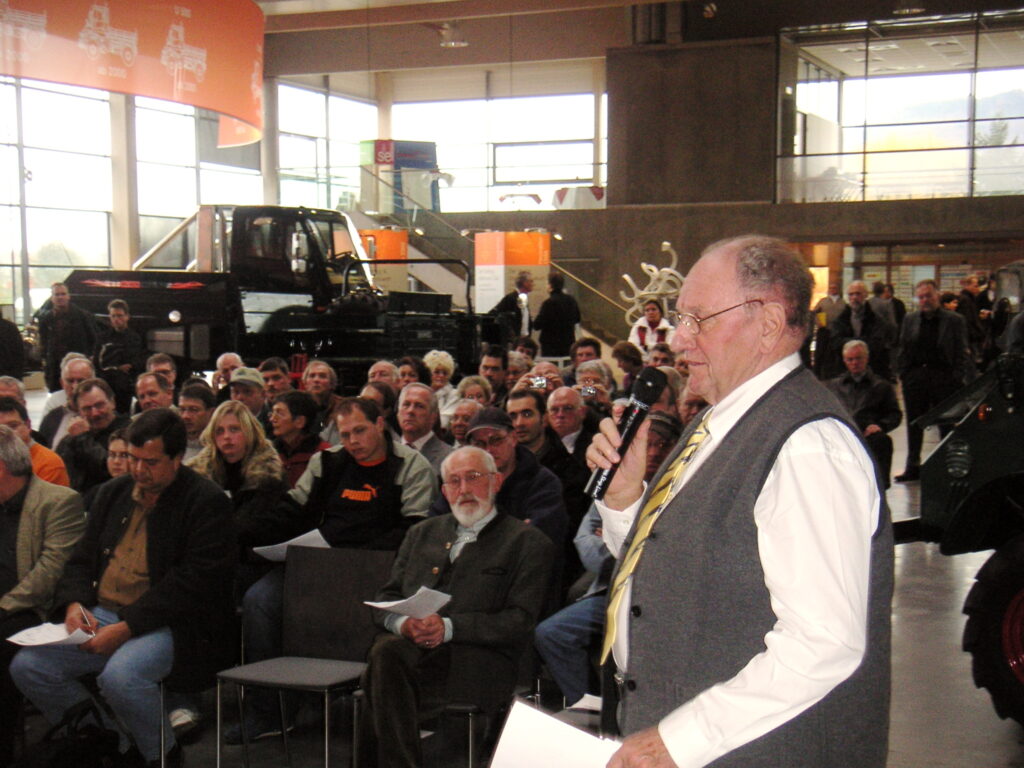
Manfred Florus 2009 als Experte bei einer Fachtagung zum MB-trac im Unimog-Museum – Manfred Florus as an expert at a symposium on the MB-trac at the Unimog Museum in 2009. Foto Michael Wessel

Auch sie sind leider nicht mehr unter uns: Heinz Schnepf (links), langjähriges Vorstandsmitglied des Unimog-Club Gaggenau und Dr. Klaus Herrmann, langjähriger Leiter des Deutschen Landwirtschaftsmuseums Hohenheim anlässlich des 90. Geburtstags von Manfred Florus – Unfortunately, they are also no longer with us: Heinz Schnepf (left), long-time board member of the Unimog Club Gaggenau and Dr Klaus Herrmann, long-time director of the German Agricultural Museum in Hohenheim on the occasion of Manfred Florus’ 90th birthday. Foto Michael Wessel

Manfred Florus um 2015 beim Studieren eines Handbuchs aus dem Jahr 1955 mit vom Werk geprüften und freigegebenen Anbaugeräten für den Unimog. – Manfred Florus around 2015 studying a manual from 1955 with factory-tested and approved attachments for the Unimog. – Foto Michael Wessel




